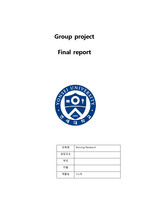· 강정희. (2018). 남자 간호사의 사회적지지, 정서적 소진 및 직무스트레스가 직무만족과 이직의도에 미치는 요인. 가정간호학회지, 25(2), 175-183.
· 김수올, 강윤희. (2016). 남자 간호사의 이직의도 예측모형. 성인간호학회지, 28(5), 585-594.
· 김현수, 이정섭. (2017). 남자 간호사의 이직 경험. Journal of Korean Academy of Nursing, 47(1), 25-38.
· 박형숙, 하재현, 이미헌. (2014). 남성 간호사의 성 역할정체감, 성 고정관념, 직무만족 및 이직의도의 관계. 한국산학기술학회 논문지, 15(5), 2962-2970.
· 손행미, 고문희, 김춘미, 문진하, 이명선. (2003). 남자간호사의 실무 적응 경험. Journal of Korean Academy of Nursing, 33(1), 17-25.
· 윤은자, 김희정. (2013). 간호사의 이직의도 도구 개발. 대한간호학회지. 43(2), 256-266.
· 이경주, 김미영. (2014). 남자간호사의 성역할 갈등, 직무만족 및 조직몰입에 관한 연구. 성인간호학회지, 26(1), 46-57.
· 안은성, 추수경. (2011). 남자간호사의 성 고정관념과 직무만족에 관한 연구. 간호행정학회지, 17(1), 14-21.
· 안민권, 이명하, 김현경, 정석희. (2015). 남자간호사의 직무만족, 조직몰입 및 이직의도. 간호행정학회지, 21(2), 203-211.
· 위휘, 박영례, 송미승. (2013). 남자고등학생의 남자간호사 이미지. 기본간호학회지, 20(2), 118-128.
· 염은이, 서금숙. (2016). 남자간호사의 성역할 갈등, 간호전문직관이 이직의도에 미치는 영향. 한국콘텐츠학회논문지, 16(12), 794-804.
· 안민권, 이명하, 김현경, 정석희. (2015). 남자간호사의 직무만족, 조직몰입 및 이직의도. 간호행정학회지, 21(2), 203-211.
· 황하만, 김명자. (2017). 남자간호사의 성역할 갈등, 직무만족 및 이직의도와의 관계. 간호행정학회지, 23(1), 32-41.
· Ahn, K. H., Seo, J. M., & Hwang, S. K. (2009). Content analysis of male hospital nurses' experiences. Korean Journal of Adult Nursing, 21(6), 652-665.
· Bae, Y. S. (2016). Mediator effect of professional self-concept in the relationship between job stress and turnover intention of new nurses. master's thesis, Kyungpook University, Daegu.
· Baker, C. R. (2001). Role strain in male diploma nursing students: a descriptive quantitative study. Journal of Nursing Education, 40(8), 378-380.
· Chen, S. G., Yu, H. Y., Hsu, H. Y., Lin, F. C., & Lou, J. H. (2013). Organizational support, organizational identification and organizational citizenship behavior among male nurses. Journal of Nursing Management. 2(1), 1072-1082.
· Choi, J. H., (2011). Related Factors the Job Satisfaction, Burnout and Turnover Intention of Male Nurses. published master’s thesis, Dong-A University, Busan.
· Eisler, R. M., & Skidmore, J. R. (1987). Masculine gender role stress: Scale development and component factors in the appraisal of stressful situation. Behavior Modification, 11(2), 123-136.
· Faul, F., Erdfelder, E., Buchner, A., & Lang, A. G. (2009). Statistical power analyses using G*Power 3.1: Tests for correlation and regression analyses. Behavior Research Methods, 41(4), 1149-1160.
· Herakova, L. L. (2012). Nursing masculinity: Male nurses' experiences through a co-cultural lens. Howard Journal of Communications, 23(4), 332-350.
· Han, S. H., (2017). The Effect of Nurses’ Gender Stereotypes on the Evaluation of Male Nurses’ Nursing Performance. published master’s thesis, Keimyung University, Daegu.
· Lee, S. Y., (2004). Study on job satisfaction and intentions of turnover of male nurses. published master’s thesis, Hanyang University, Seoul.
· Lee, J. I., (2002). Effects of sex role and job characteristics on the job satisfaction and career attitudes. published master’s thesis, Gyeongsang National University, Jinju.
· Lee, S. Y., Kim, I. S., Kim, J. H., & Kim, J. A. (2012). Development of Korea Male Gender Role Conflit Scale. The Women’s Studies, 82(1), 5-33.
· McMillian, J., Morgan, S. A., & Ament, P. (2006). Acceptance of male registered nurses by female perspective. British Journal of Nursing Scholarship, 38(1), 100-106.
· O'Neil, J. M., Helms, B. J., Gable, R. K., David, L., & Wrightsman, L. S. (1986). Gender-role conflict scale: College men's fear of femininity. Sex Role, 14(5-6), 335-350.

